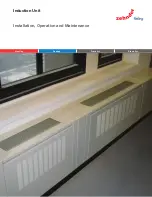
20
COMMON ERRORS FOR AUTOMATIC CUTTING
Problem
Cause
The pilot arc ignites, but is not transferred.
The earth cable is not making good contact
with the cutting bench, or the cutting bench is
not making good contact with the plate.
The torch / plate gap is too big.
The plate has not been penetrated completely and excessive
sparks are produced on the upper side of the plate.
Rust or paint on the surface of the plate.
The consumables are worn and must be replaced.
The earth cable is not making good contact
with the cutting bench, or the cutting bench is
not making good contact with the plate.
The cutting voltage is too low.
The cutting speed is too high.
The cutting thickness is too great.
Burrs formed at the bottom of the cut.
The air settings are incorrect.
The consumables are worn and must be replaced.
The cutting speed is incorrect.
The voltage is too low.
The cutting angle is not perpendicular.
The torch is not perpendicular to the plate.
The air settings are incorrect.
The consumables are worn and must be replaced.
The direction of movement of the torch is incorrect.
The high quality cut is always to the right in relation
to the forward movement of the torch.
The gap between the torch and plate is incorrect.
The cutting speed is incorrect.
The lifespan of consumables is short.
The air settings are incorrect.
The arc current, arc voltage, cutting speed, and
other variables are not configured correctly.
Ignite the arc in the air (start of end the cut outside the
plate's surface). It is possible to start from the edge,
provided the arc is in contact with the plate when ignited.
Beginning of piercing with the torch at the wrong height.
The piercing time is incorrect.
The air quality is poor (oil or water in the air). Use
the additional filtration system, CEA code 427529
(Fig. D) with a filtration grade of 0,01 μinch - 0,25 μm
available via CEA PLASMATECH distributors (the
order code for replacement filters is 427530).
on the materials increases, it may be necessary to increase
the piercing delay.
For optimum execution of a hole, it is worth considering that the
diameter must be more than twice the thickness of the plate.
The chemical properties of the materials, can have an impact
on the piercing capacity. For example, a high-strength steel
with a high manganese or silica content, may reduce the max-
imum piercing capacity.
Summary of Contents for SHARK 155
Page 47: ......
















































